Comparing the Playdate to Nintendo’s original Game Boy is mostly a compliment.
The diminutive, bright yellow handheld gaming device from Panic Inc. is adorably quirky, with a new-fangled, crank-forward control scheme powering its library of 24 brand new titles from a lineup of talented indie creators that includes Serenity Forge, Nels Anderson, Bennett Foddy, and others. It’s not particularly powerful and the hands-on experience can feel a bit rough around the edges at times. But the spirit of inventiveness that fuels the overall package is a strong selling point unto itself.
The Playdate was first revealed in 2019, and it’s been a long road filled with delays in the midst of the global pandemic. But the time has finally come, with the first pre-orders for the $179 gaming device starting to ship on April 18. For gamers of a certain age, the Playdate instantly evokes memories of Nintendo’s portable gaming debut — and yes, I’m talking warts and all.
Post Contents
Playdate: The hardware
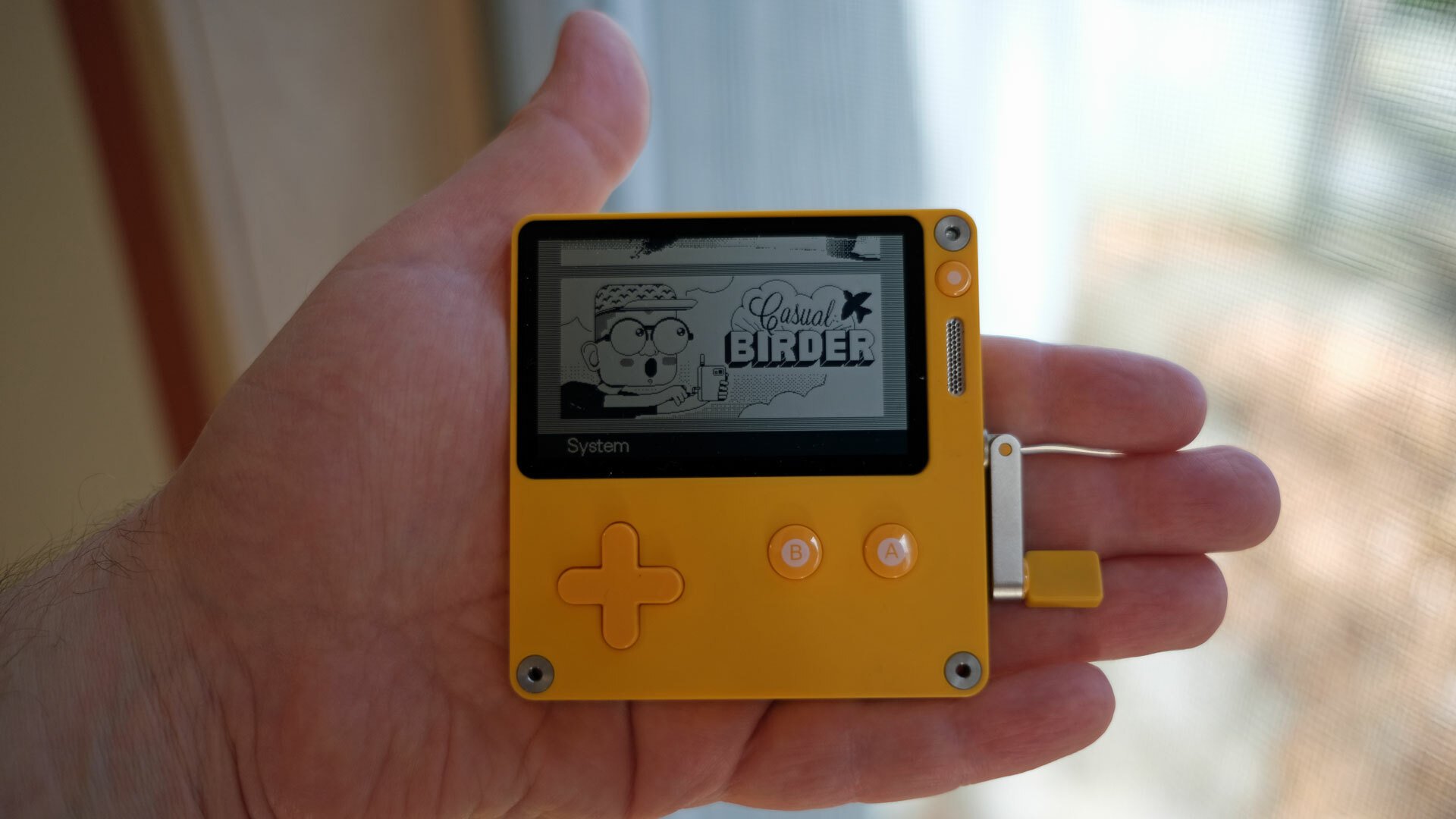
Credit: Adam Rosenberg / Mashable
The good indisputably outweighs the bad here. Nestling the Playdate in between my two average-sized palms is a marvelous feeling. The lightweight device — it weighs in at just over three ounces — still feels substantial to hold, with a surprisingly satisfying amount of heft to its thin, round-edged, roughly 3-inch square of a plastic body. It’s about the same shape and thickness of a smartphone that’s been cut in half, and that’s exactly what it feels like when I wrap my hands around it.
The Playdate’s ripe banana-colored body is nicely accented by flourishes of brushed metal, evident in both the donut-shaped screws in each corner that hold the Playdate together, as well as the spinning arm of the device’s crank. That product-defining feature sports a yellow plastic handle that spins easily as you turn the crank, and the whole thing folds down into a side-mounted pocket when not in use.
The Playdate is pretty in the same kind of way the original Game Boy’s chunky gray brick body was pretty. The Playdate is smaller and sleeker than its spiritual predecessor, but it strikes an odd profile nonetheless. As nifty as the crank is conceptually, it looks as awkwardly placed as it sometimes feels to use, positioned barely an inch away from the two “face” buttons.
The Playdate is pretty in the same kind of way the original Game Boy’s chunky gray brick body was pretty.
Its yellow-and-white A and B buttons sit directly across from a yellow four-point directional pad. A smaller “Home” button is set into the top right corner, just below one of those donut screws. The primary button controls all have a springy feel and satisfyingly click-y response when pressed. There’s also a brushed metal button on the top edge that wakes up your Playdate when you press it twice, a smart battery-saving feature for a device that’s perfectly sized for pocket storage.
The Playdate’s mono speaker is set just to the right of the screen and it’s surprisingly powerful. You can easily adjust the volume by pressing the Home button and then using the D-pad on the menu that appears to highlight the sound setting and push it louder or softer. But you may want to keep headphones handy (there’s a 3.5-inch jack on the bottom of the device) for those times when you’re out and about.
Battery life is also impressive, especially for a piece of hardware that you can’t manually power down. The Playdate only has a standby mode but even when it’s “asleep,” the always-on black-and-white screen shows you the time. It lasted multiple days in standby mode during testing, and held up for many more hours than I could manage in a single play session.
The official specs promise two full weeks of battery life in standby mode and eight hours of gameplay. I wasn’t able to run a proper test of the standby time given the review timetable we were working with, but I was able to put in multiple multi-hour sessions before even having to think about a recharge. When you do eventually plug the Playdate in, the included USB-C cable allows for a speedy recharge.
Its small, rectangular 400×240 1-bit display is where those warts I mentioned make themselves known the most. While the Playdate delivers a nice and sharp monochrome image, it lacks any kind of backlight. That makes the gameplay all but impossible to see in any low-light conditions, so perish the thought of playing this thing at night in bed or even while lying down on a couch.
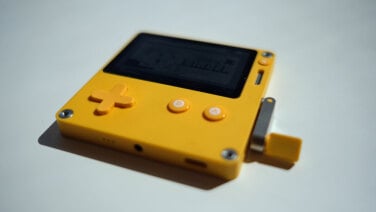 Credit: Adam Rosenberg / Mashable
Credit: Adam Rosenberg / Mashable
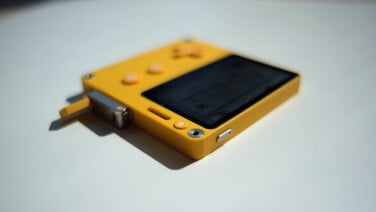 Credit: Adam Rosenberg / Mashable
Credit: Adam Rosenberg / Mashable
The viewing experience suffers the moment light stops hitting the screen directly. While the Sharp Memory LCD packed into every Playdate differs quite a bit from the black-and-white e-ink display that’s familiar to Kindle and reMarkable owners — you get a much sharper image than those other devices deliver, especially when it comes to a moving image — the viewing limitations are similar. It’s not just the lack of a backlight, either.
I still often find myself struggling to see what I’m playing even when there’s a perfect amount of light. The screen is too compact for glare to be much of an issue, but the Playdate’s razor-thin viewing angle is a real problem. Images are crisp and well-defined when you’re looking at the display directly, but that clarity is muddied almost immediately if your hands naturally tilt forward or backward just a little bit as you’re playing.
The wonky display doesn’t kill the experience by any stretch, but it severely limits the Playdate’s potential as a portable gaming device. The need for direct light makes it difficult to have that kind of relaxed “lean back” experience that tends to fit best for mobile gaming. But more than that, the viewing angle limitations also make the Playdate less adaptable for commutes and other kinds of on-the-go gaming.
The sum total of those display issues puts a damper on an otherwise well-designed and wholly unique gaming platform. That uniqueness is most evident in the crank. The way it’s implemented varies from game to game. Some titles don’t use it at all, and it feels like an ungainly fit in a few others. But the best examples of crank-forward titles demonstrate exactly why Panic Inc. embraced such an unusual control quirk.
The Playdate also comes with 4 GB of onboard flash memory, 802.11bgn 2.4 GHz WiFi and Bluetooth support — that’s the main method of delivery for games and updates — as well as a 3-axis accelerometer. Only a couple of games use the motion-sensing feature from what I’ve seen so far, but it is there.
Playdate: A built-in game library
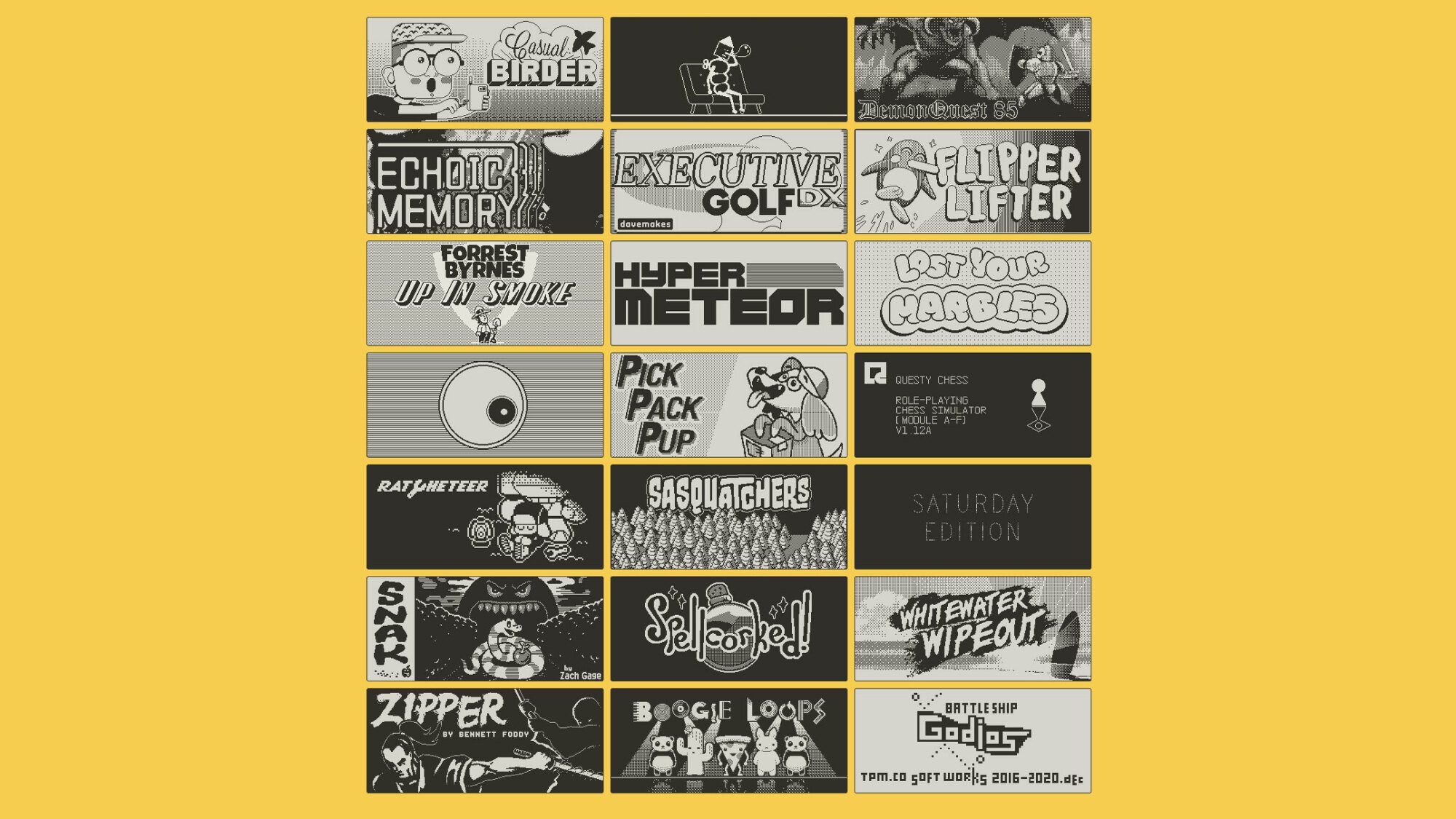
Credit: Panic Inc.
The Playdate rethinks how players build their library of games. Rather than offer up an app store where individual titles can be purchased à la carte, those who buy a Playdate are also paying for the 24 games making up its first “season” of releases. You won’t have them all on day one, however. Instead, expect to receive two games each week during the 12-week season — they’re small in size, but know that you’ll need an online connection to get them.
For the review period, Panic delivered all 24 of the Playdate’s initial season of games on a truncated daily schedule. Each newly delivered game appears on the Playdate’s dashboard as a wrapped gift that, once selected, is revealed as animated robot arms tear the wrapping away. (In another bit of parity with Nintendo, the company’s portable DS took a similar approach with newly downloaded games.)
I don’t want to say too much about individual games since surprise is such a big component of the weekly delivery approach. (Panic has only shared the full list of titles and title cards.) The delivery schedule that consumers will experience is part of the appeal here, though; weekly content drops guarantees roughly three months’ worth of ongoing interactive surprises that amount to new reasons to pick up your Playdate again.
The Playdate rethinks how players build their library of games, delivering two games weekly in a “season” of 24 games as part of the package.
The library you’ll amass over 12 weeks spans a diverse range of genres and ideas, but most everything is a snap to pick up and play. There are puzzle games that involve matching images or sounds, clever riffs on retro gaming classics like Asteroids and Breakout, games that let you futz with the passage of time using Playdate’s crank, plus story-driven adventures, quirky RPGs, turn-based tactical strategy, roguelikes, sports, and even a full-blown synthesizer app.
The initial season kicks off with a crank-operated surfing game, Whitewater Wipeout, and a wholesome RPG about birdwatching, called Casual Birder (in which the crank powers the game-defining puzzle of adjusting focus when you’re snapping a photo). While both titles together speak to the kind of variety you can expect to see in subsequent weeks, they also highlight a key aspect of the Playdate that might not work for every player.
Many of the games in Panic’s first season require a fair bit of experimentation before you really get a handle on what they’re doing. I grasped the mechanical quirks of Whitewater Wipeout quickly enough, but Casual Birder continues to confound. The games that do include tutorials sometimes don’t go far enough, or simply offer an abbreviated “rules” pages that lays out the basics. A few titles just toss you in cold, and some aren’t even remotely intuitive to play. It’s not an unexpected development given Playdate’s technical limitations compared to, say, a smartphone or Nintendo Switch.
There’s also the pedigree of the first season’s multifaceted indie creators to consider, which includes the likes of Keita Takahashi (Katamari Damacy), Bennett Foddy (QWOP), and Zach Gage (SpellTower). Most of the talent in that lineup already has a reputation for building more experimental and offbeat interactive experiences, and what’s been created here should surprise and delight their fans.
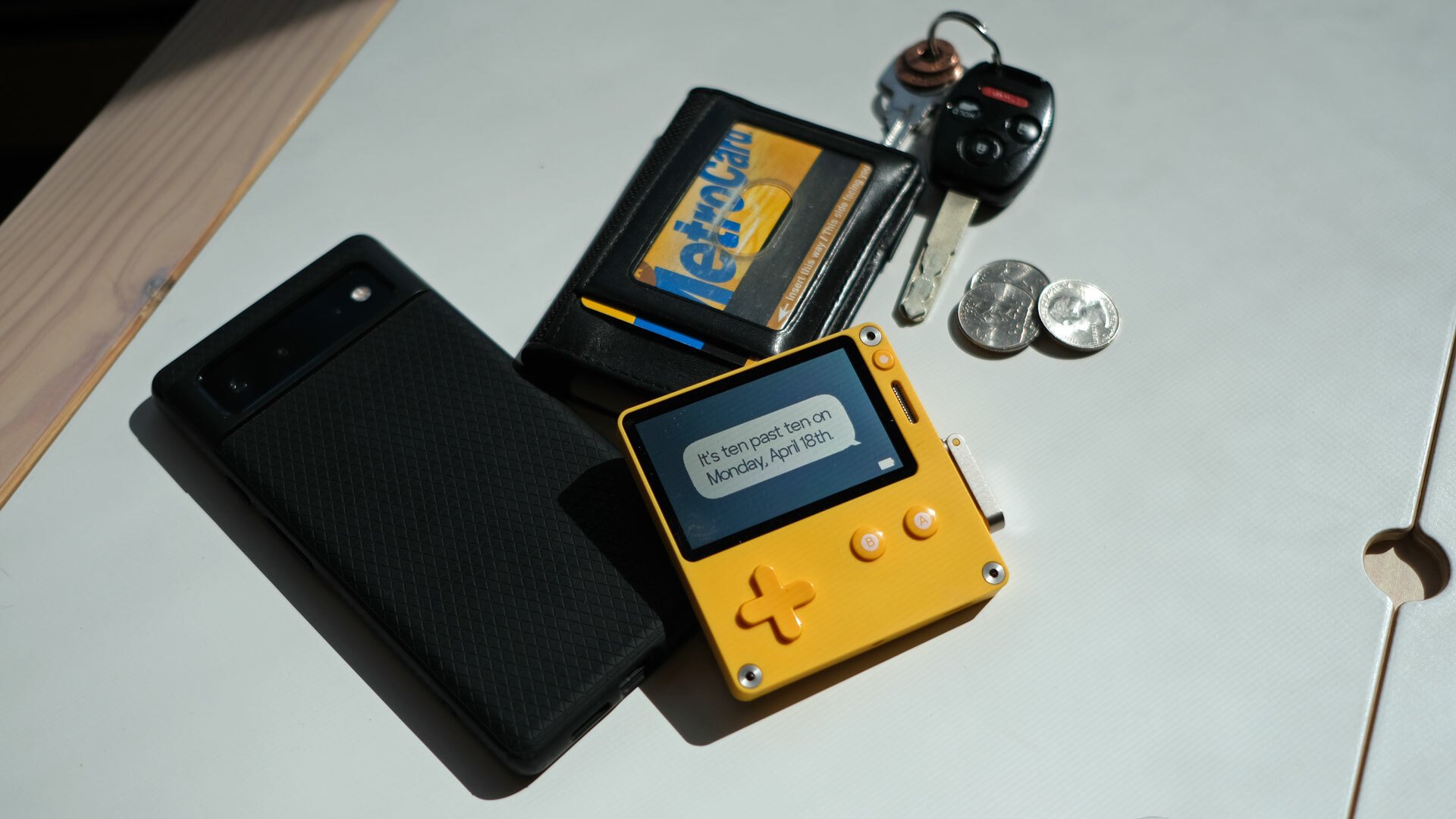
Credit: Adam Rosenberg / Mashable
Still, it can be frustrating to spend more than 20 or 30 minutes playing a new game for the first time and finding yourself struggling to figure out what it even wants you to do. Some players enjoy that kind of challenge, and they’re the ones who are poised to wring as much joy out of the Playdate as possible. But the raw and experimental feel of the overall lineup is something to keep in mind if your mobile gaming tastes skew simpler.
There are also a couple of games where the ambition seems to exceed the execution. One title you’ll get early in the season features a level where you have to spin the crank very quickly… but at a smooth and steady pace, and the bar for success feels like it’s set just a bit too high.
Another game uses only the lower half of the crank’s range of motion to control a ball by tilting the play space to the left and right. It’s a neat idea that’s awkward to play in practice in part because the game’s tilt feature gets confused when you overspin. The Playdate’s technical limitations are also a factor here, with the ball’s movements feeling too floaty and unmoored from the physical laws of the universe.
Playdate: Small stature, big potential
The potential for growth here is huge, however. The Playdate’s online connection means both the games and the operating system itself can receive updates. Panic also offers an assortment of completely free software development tools along with clear instructions for installing games that aren’t part of the Playdate’s inaugural content season.
I haven’t even begun to look around for non-seasonal games, but they do exist. And while it won’t be for everybody, the primary development tools — Playdate Pulp and Playdate Caps — feature clear, easy-to-grasp graphical interfaces that put a more welcoming face on the daunting project of building a whole, entire video game.
It’s when I look at the Playdate’s various shortcomings in the context of the full package that the Game Boy comparison really hits me like a freight train. I vividly remember scrounging for batteries after extended Super Mario Land sessions, and squinting with my whole face just to see where blocks were falling in Tetris. I also remember giving zero fucks about any inconveniences because my oh my it was so much gosh darned fun!
The Playdate’s marvels are similarly satisfying, and I think that’s because Panic seems to understand the source of Nintendo’s magic: The act of play is most enjoyable when it’s fueled by a sense of wonder.
Rawness and rough edges are defining qualities here, worn like badges of honor by a product that’s defined by creative experimentation. Rather than gun for some blockbuster idea of perfection, Panic charmingly embraced the Playdate’s natural limitations in the name of fun. It’s a mighty digital toybox in a miniature form factor, and an implicit celebration of the video game medium’s unique ability to surprise and delight.
Playdate is now available for pre-order from Panic Inc.’s website.